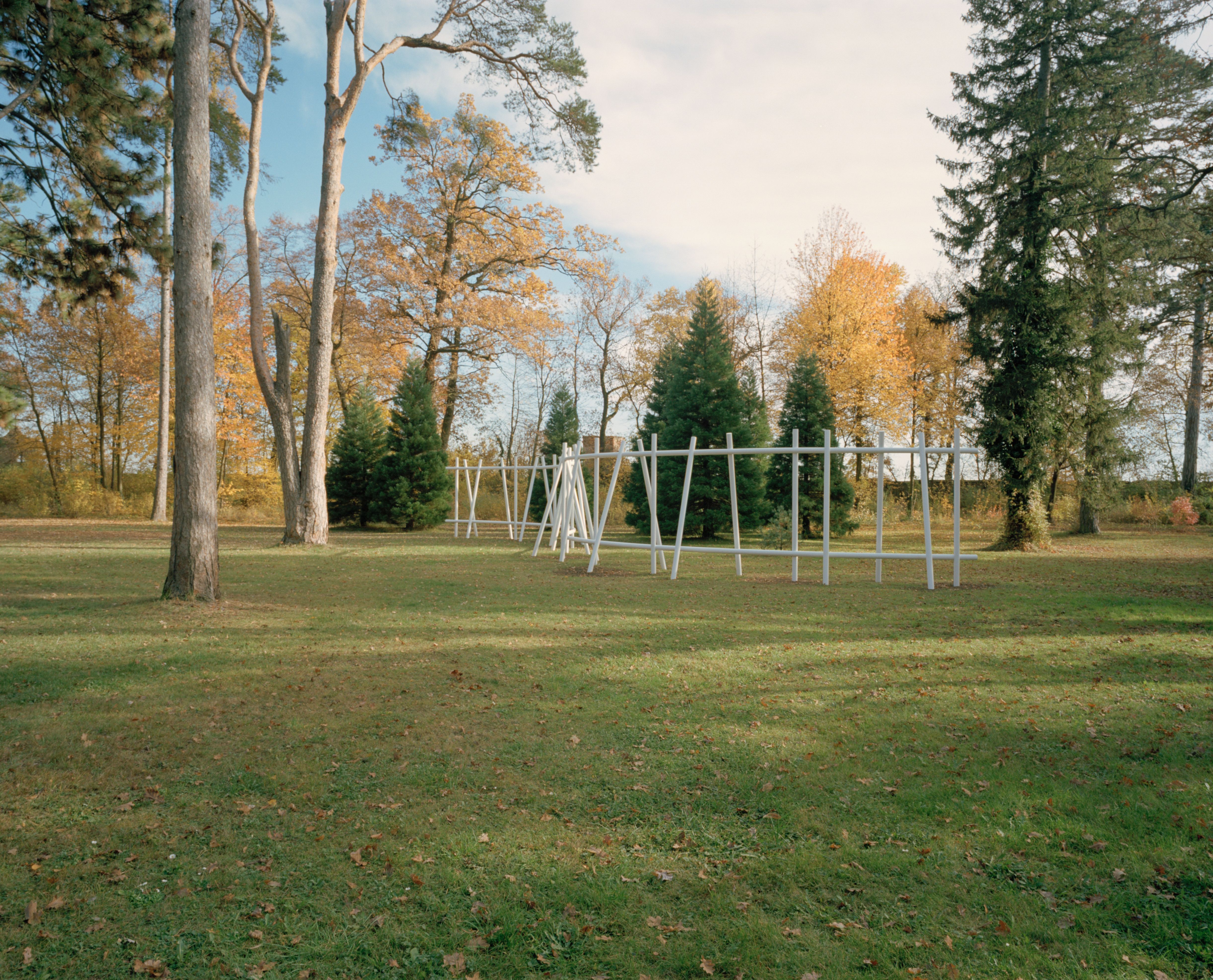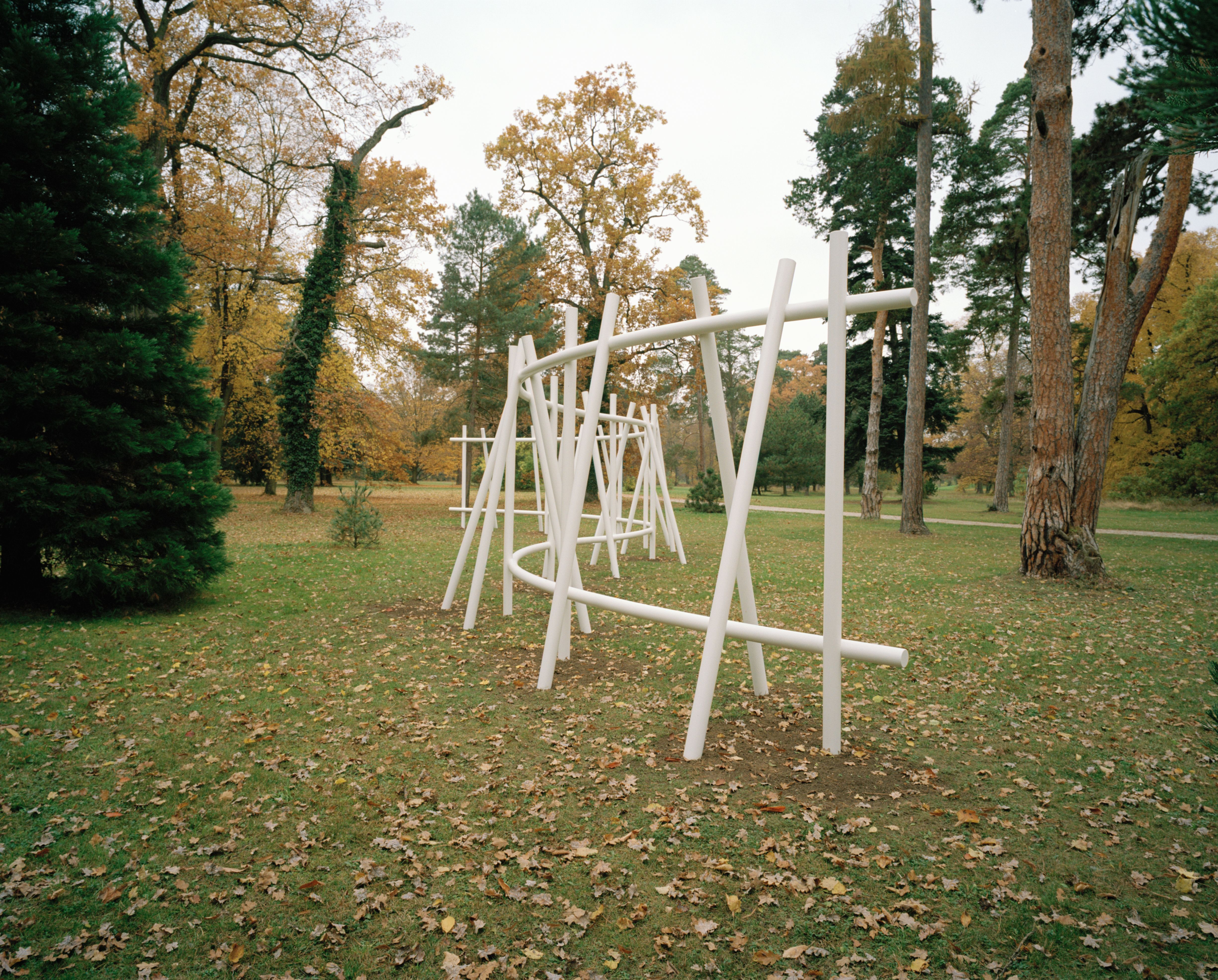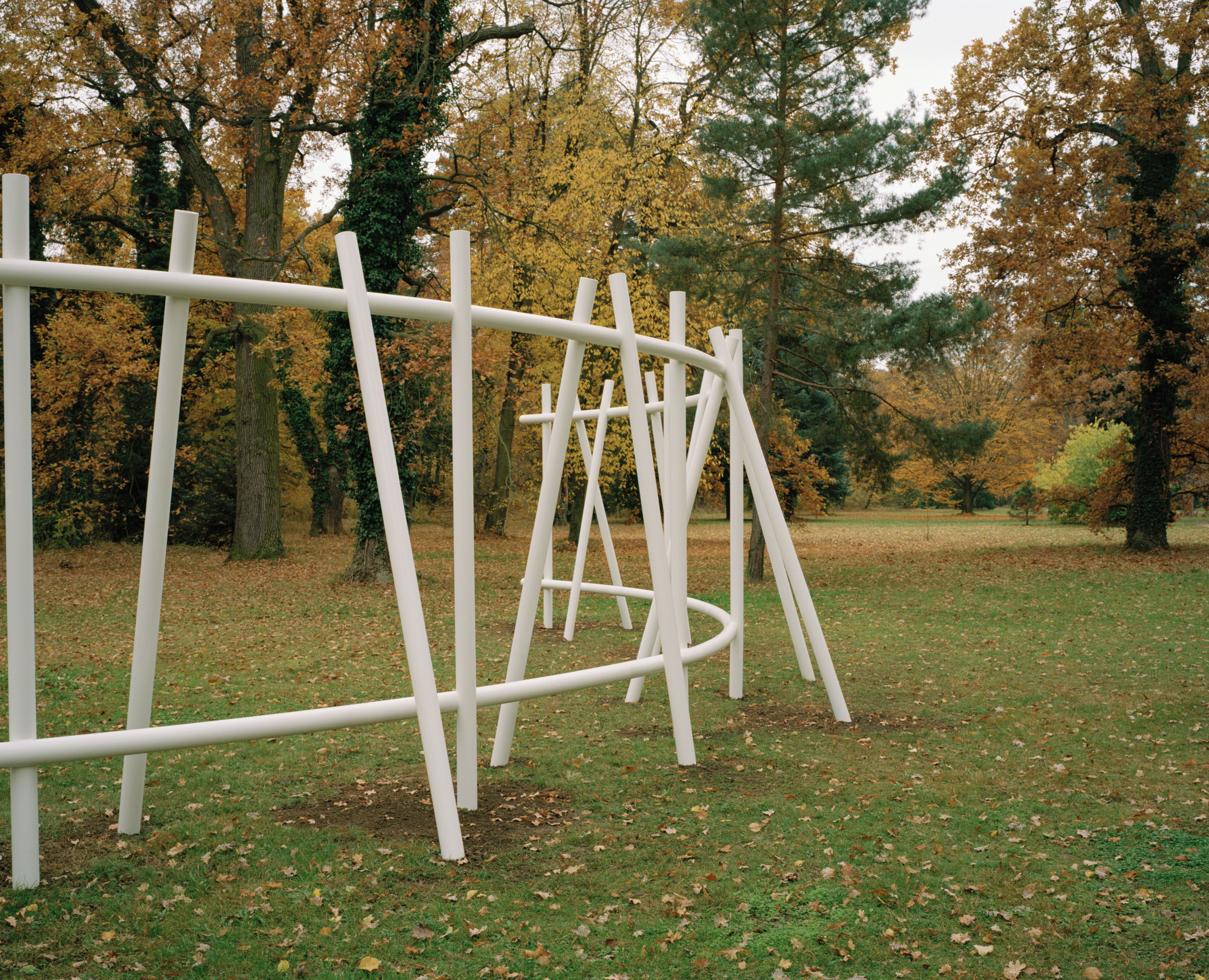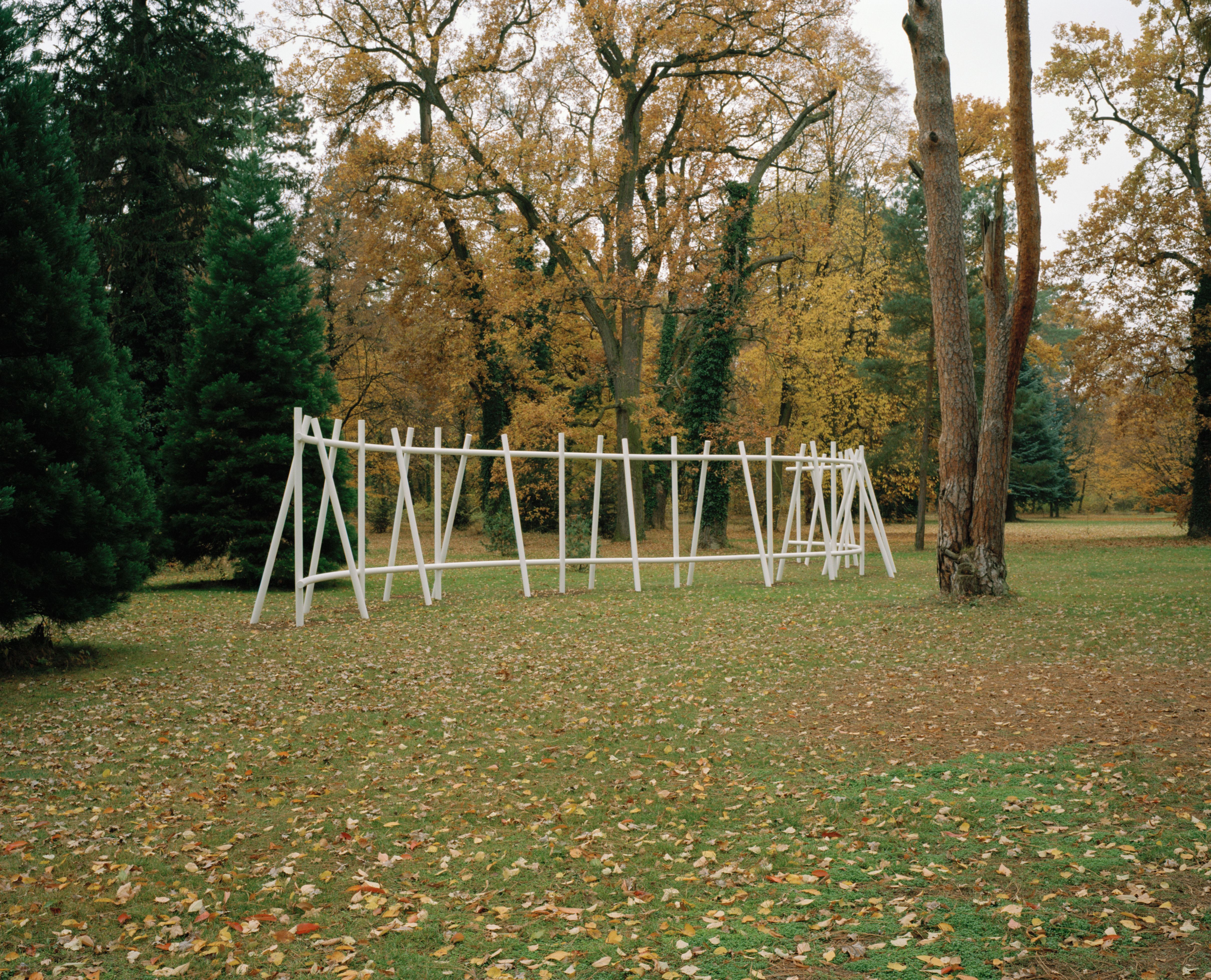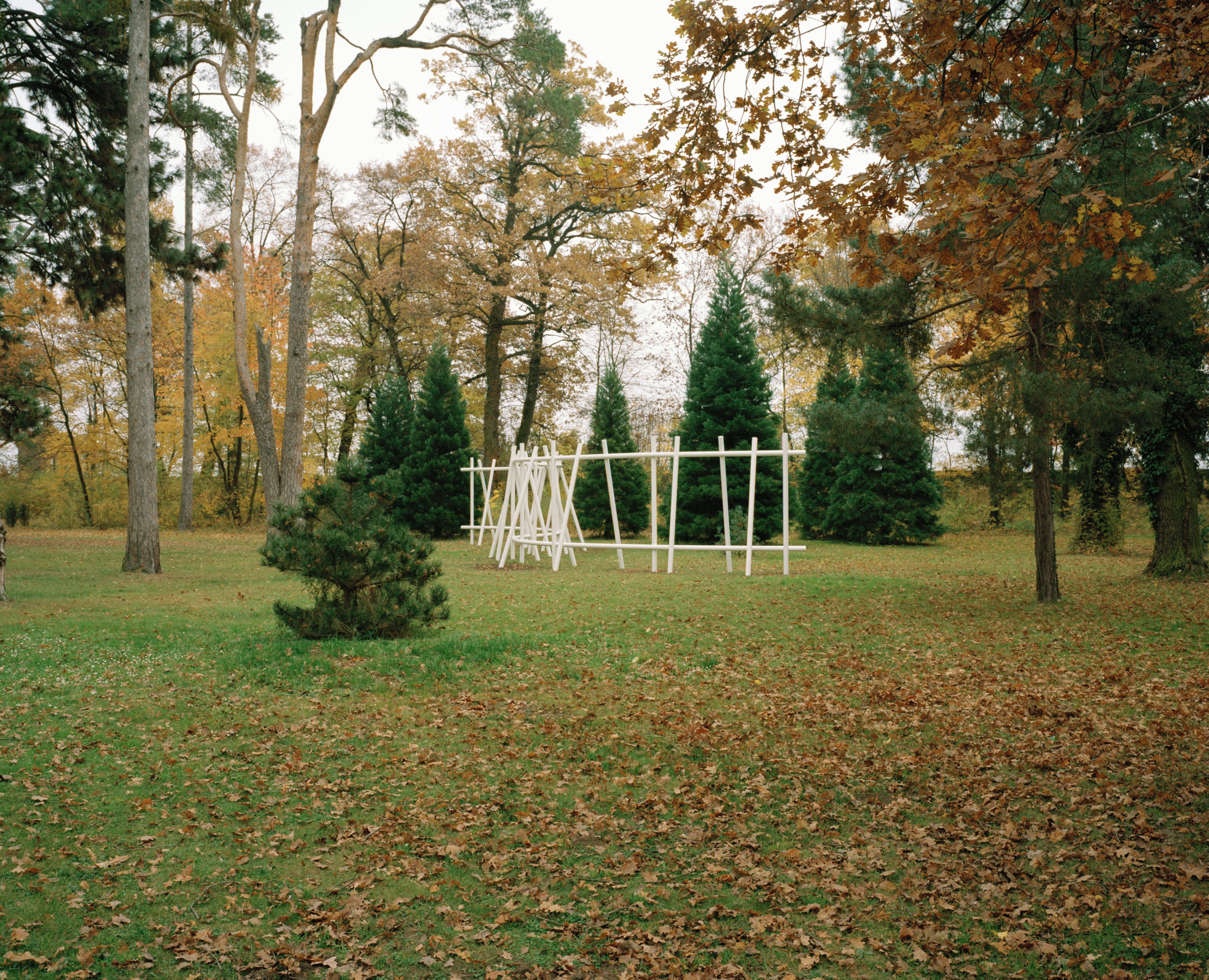Werner Feiersinger
:
Sculpture in Grafenegg Schlosspark
Back
Information
Thirty angled verticals sunken into the ground are connected to form an abstract construction by two parallel horizontals made of white enamelled stainless steel. The work operates on a number of different levels: site-specifically, as a counterpart to the rural setting, or in its own right, referencing the history of the architecture.
Werner Feiersinger is a sculptor who combines the formal vocabulary of minimal art with a vast knowledge of the history of design and architecture - essential ingredients for his deviant objects. What appears to conform to a classical cannon proves an irritant on closer scrutiny, what suggests fixed values slips into paradox.
The work at Grafenegg Schlosspark is a refined construction and contextualised in a variety of ways: the object swings with an elegant S-curve through a loose group of sequoia trees, reminiscent of a fence or a balustrade. Thirty verticals sunk into the ground at an angle are linked by two parallel horizontals of white lacquered stainless steel. Feiersinger condenses the meandering footpaths and their relationship to the angled, tapering group of trees to form an abstract construction. It is light and transparent, suggesting and inside and an outside while remaining fragmentary and open. One of the historical references is an exhibition display by Lilly Reich that she completed in 1927 with her partner Ludwig Mies van der Rohe, in Paris. Feiersinger was preoccupied and fascinated by this display system from the international modernist movement. In the context of the park it creates a stage situation: an artificially landscaped ensemble that could not appear more natural, more casual, impacting on an object that goes beyond site-specifity, also having a participatory element with the range of possibilities that this implies.
(Brigitte Huck)
